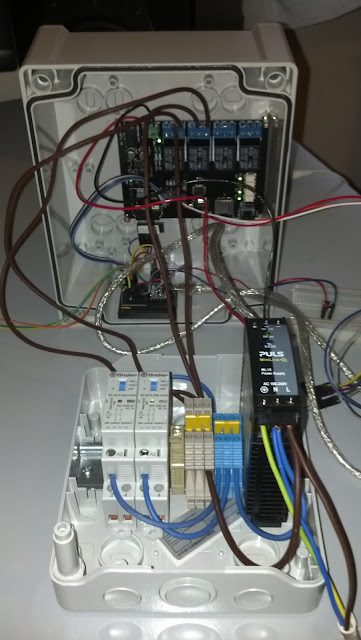Arduino pulse counting with multiple Energy Meters and logging to Emoncms

Disclaimer: Part of the circuit shown runs (by necessity) 220V AC current. If you are not sure what that means and how to avoid getting injured because of it, please keep reading but don't try replicating the project. I am in no way responsible if you manage to get electrocuted but I would be sorry to know that you did it because you tried this at home and you didn't read the disclaimer ..... Introduction I have been working on a prototype for an arduino based project aimed at measuring energy consumption using multiple energy meters that can be interfaced to an arduino input pin like this one from finder : the requirements for this project: monitor power consumption using multiple counters store the collected data through a net connection to an Open Energy Monitor instance Such a setup would allow me to monitor multiple power consumption (or production) counters, like house energy consumption and photovol...

